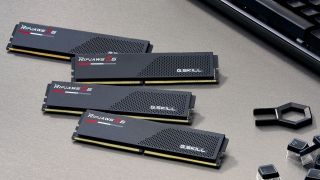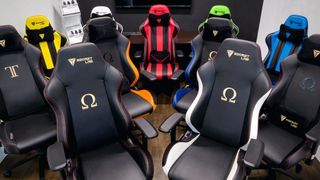DDR5 RAM could cost 50–60% more than DDR4 at launch
According to an MSI blog post, expect to pay big for Alder Lake memory.

The next major upgrade to our PC's RAM, DDR5, is expected to land shortly, and according to an MSI blog post, we're probably going to have to pay over the odds to get it. The post, which is titled All you need to know about DDR5 memory modules, offers a brief but informative overview of what makes DDR5 so special compared to its predecessor, DDR4.
Towards the bottom of the post (via Tom's Hardware), MSI makes its predictions for the pricing of DDR5: "Historically, newer memory technology has always commanded close to a 30-40% premium over the previous generation. However, this time, DDR5 includes additional components that have driven the costs up further. As a result, we expect a 50-60% price premium compared to DDR4 at launch."
It's not entirely great news about how long this will be the case either, with the section going on to predict, "It typically takes around 2 years to reach price parity with previous generations, and we expect trends to remain similar with DDR5 modules as well."
At this point, we've seen no pricing information for DDR5 memory modules from their actual manufacturers, despite new DDR5 kits being announced almost daily. We would expect to get such information when Intel official launches Alder Lake, though.
The latest rumours have Alder Lake launching on November 4, and that's relevant here because Intel's 12th-gen will be the first consumer CPU to support DDR5. It's actually down to support DDR4 and DDR5, but motherboard manufacturers are expected to stick with the newer standard, leaving DDR4 support as something of a niche. If DDR5 is as expensive as MSI expects, it might be DDR5 that is the niche.

Best chair for gaming: the top gaming chairs around
Best gaming desk: the ultimate PC podiums
Best PC controller: sit back, relax, and get your game on
From what we've seen so far, such as G.Skill's memory specs (pictured above), DDR5 does appear to offer impressive operating frequencies, although at the same time the latencies of the modules announced have been surprisingly high—CAS Latency of 40 on DDR5-4800 memory is fairly common.
There's an added problem for DDR5 at the moment too, because, despite the global silicon shortage, DDR4 RAM kits are surprisingly affordable. And you can grab some seriously speedy kits at the same time, with low latencies as well as high clock speeds. It's a great time to upgrade your current setup with some of the best RAM for gaming.
The biggest gaming news, reviews and hardware deals
Keep up to date with the most important stories and the best deals, as picked by the PC Gamer team.
In other words, DDR5 has its work cut out and is going to need to offer something truly special to make it the memory standard to go for.
Alan has been writing about PC tech since before 3D graphics cards existed, and still vividly recalls having to fight with MS-DOS just to get games to load. He fondly remembers the killer combo of a Matrox Millenium and 3dfx Voodoo, and seeing Lara Croft in 3D for the first time. He's very glad hardware has advanced as much as it has though, and is particularly happy when putting the latest M.2 NVMe SSDs, AMD processors, and laptops through their paces. He has a long-lasting Magic: The Gathering obsession but limits this to MTG Arena these days.
Most Popular






